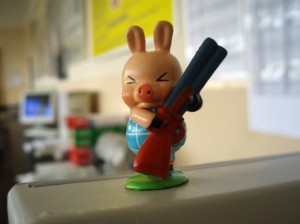Dealing With Phobias

Being afraid is a normal response to dangerous situations, and most of us have experienced fear. Fear is designed to protect us from danger, triggering a ‘fight or flight’ reaction to deal with the situation. However, it is important to distinguish between rational fears, and ones that can limit our behaviour and cause extreme reactions. So what is a phobia, and how is it best to deal with a phobia that impacts the way you live your life? Read on to find out.
Defining a Phobia
 A phobia is defined as an extreme or irrational fear of or aversion to something. Although it can be considered sensible to be afraid of heights, snakes, or flying for example, the risks are actually very low. So being able to rationalise the risk stops the fear from actually becoming a phobia. If, however, you avoid getting on planes, then your response is irrational and would be defined as a phobia.
A phobia is defined as an extreme or irrational fear of or aversion to something. Although it can be considered sensible to be afraid of heights, snakes, or flying for example, the risks are actually very low. So being able to rationalise the risk stops the fear from actually becoming a phobia. If, however, you avoid getting on planes, then your response is irrational and would be defined as a phobia.
Types of Phobia
Phobias are very common, and can be categorised into specific phobias or social phobias. A specific phobia is to be afraid of a situation of thing such as flying or spiders, while social phobia is categorised as extreme discomfort in social situations, with a fear of being observed and judged by onlookers. While many phobias about things that are rarely encountered (snakes) for example can be easily managed, others, such as agoraphobia can have a devastating impact on the quality of life of the sufferer. Phobia’s can also often manifest themselves into extreme anxiety and panic disorders, as the exaggerated anxious response caused by a phobia can lead to full blown panic attacks.
Physical Symptoms
The physical symptoms caused by a phobia are produced by extreme anxiety. These include;
- Trembling
- Sweating
- Racing Heart
- Palpitations
- Shortness of Breath
- Dizziness
These symptoms can be extremely alarming – and cause even greater distress about the phobia, actually making it worse.
Treating a Phobia
Medication such as beta-blockers, tranquilisers and anti-depressants can control the symptoms of anxiety produced by phobias, but won’t actually tackle the root cause of the problem and can cause unpleasant side-effects. Fortunately, however, phobias can often be successfully treated through CBT (cognitive behavioural therapy) or hypnotherapy.
CBT can teach the sufferer new patterns of thought to alter the triggers and responses to a phobia, whilst hypnotherapy is especially effective by working on a very deep subconscious level to identify the root cause of the fear. The problem is then worked on by changing the sufferer’s habitual response to the phobia.
Finding a Therapist
CBT and Hypnotherapists should be properly trained and qualified, so use the online Hypnotherapy Directory to find a hypnotherapist who has undertaken accredited hypnosis training. If you decide on CBT, it may be possible to be referred, as in some places it is possible to get CBT on the NHS. Make an appointment with your GP to find out. If not, be sure to find a qualified and accredited CBT therapist by checking that they are registered with the British Association for Behavioural and Cognitive Psychotherapies (BABCP).
By Rob Rudd
Images:





0 Comments